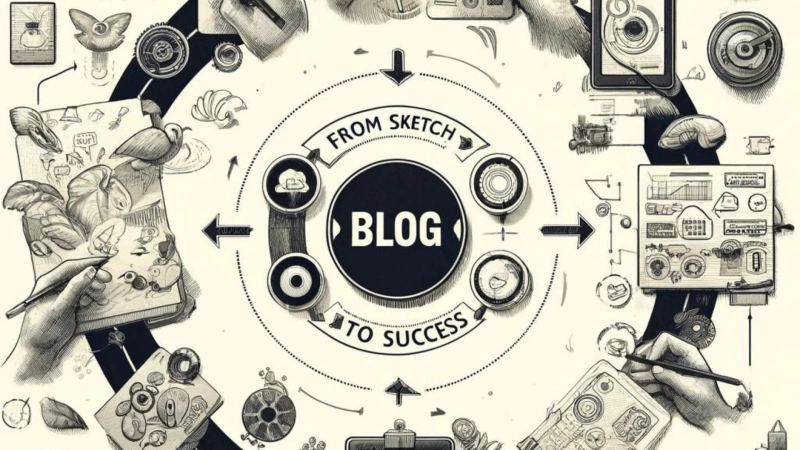The process is a beacon of adaptability and innovation in the ever-evolving design landscape, where user needs and market trends shift rapidly.
This method, rooted in the philosophy of continuous improvement, involves cyclically prototyping, testing, analyzing, and refining a product.
It's a journey from the initial sketch to the final success, where each step is an opportunity to enhance and perfect. This guide will walk you through the iterative design process, illuminating the path from a nascent idea to a polished product.
Understanding Iterative Design
Iterative design is a methodology that emphasizes repetition. Designers create prototypes, gather feedback, and refine the product in successive cycles or iterations.
This approach allows designers to explore various solutions to design problems and gradually improve the product based on honest user feedback and data.
The Iterative Design Cycle
Identify Needs and Set Objectives: Every design journey begins with understanding the problem you're trying to solve. This involves researching the market, understanding user needs, and defining clear, measurable objectives for your project.Sketch and Conceptualize: With objectives in hand, the next step is to sketch and conceptualize possible solutions. This stage involves broad strokes and big ideas, using sketches, storyboards, or wireframes to visualize concepts.Prototype: Choose one or more of your concepts and turn them into prototypes. These can range from low-fidelity mockups, like paper models or simple digital simulations, to high-fidelity prototypes that closely mimic the final product.User Testing: Put your prototype in the hands of real users. Observing users interacting with your design provides invaluable insights into its usability and appeal. Collect feedback on what works, what doesn't doesn't, and why.Analyze Feedback: Analyze the feedback to identify patterns and key takeaways. What aspects of your design met the objectives? Where did users encounter problems? This analysis will guide your next steps.Refine and Iterate: Use the insights gained from user testing to refine your design. Address the issues identified, improve upon the features that users liked, and then update your prototype. This refined prototype will undergo another testing round, analysis, and refinement.Finalize and Implement: After several iterations, finalize the design for implementation once your design meets the objectives and user needs effectively. This might involve detailed design work, coding (for digital products), or moving towards manufacturing.Key Strategies for Success
Embrace Failure as a Stepping Stone: In an iterative process, ''failures'' are not setbacks but opportunities to learn and improve. Early and frequent failures can lead to a more robust, more successful design.Keep Users at the Center: User feedback is the cornerstone of the iterative design process. Engage with your users throughout the process to ensure the design aligns with their needs and preferences.Stay Flexible: Be prepared to pivot or change direction based on what you learn during testing. The iterative process's strength lies in its flexibility and adaptability.Focus on Objectives: While getting caught up in refining details is easy, always relate changes to your original objectives. Ensure that each iteration brings you closer to meeting those goals.Collaborate and Communicate: Iterative design is often a team effort. Regular communication and collaboration among team members can foster creativity and ensure everyone is aligned on the project's goals and progress.Real-World Example: The Iterative Design of a Mobile App
Consider the development of a mobile app aimed at helping users track their daily water intake. Based on market research and identified user needs, the initial concept suggests users want a simple, engaging way to log water consumption and receive hydration reminders.
Initial Sketches: Designers brainstorm and sketch various app interfaces, focusing on simplicity and ease of use.Prototype: A basic clickable prototype is developed, featuring a water log, daily goals, and reminder notifications.User Testing: Early testing reveals users like the reminder feature but find the logging process cumbersome.Refine and Iterate: The team simplifies the logging process, adds motivational achievements, and tests a new iteration.Analyze and Refine: Further testing shows improvements in user satisfaction. Minor tweaks are made to the interface based on additional feedback.Finalize: The final design is polished and prepared for launch with positive feedback and objectives met.Iterative design is a continuous and flexible process that involves multiple rounds of designing, testing, and refining a product until it meets the desired objectives. A cyclical path enables designers and developers to learn, experiment, and fine-tune their designs based on user feedback.
By embracing this process, designers can create functional and user-friendly products while meeting their target audience's needs. Whether it's a website, mobile app, or a physical product, iterative design principles can guide designers toward developing innovative and user-centric solutions that stand out in the market.
Also, here's a read that will help you understand-
What is design thinking?

